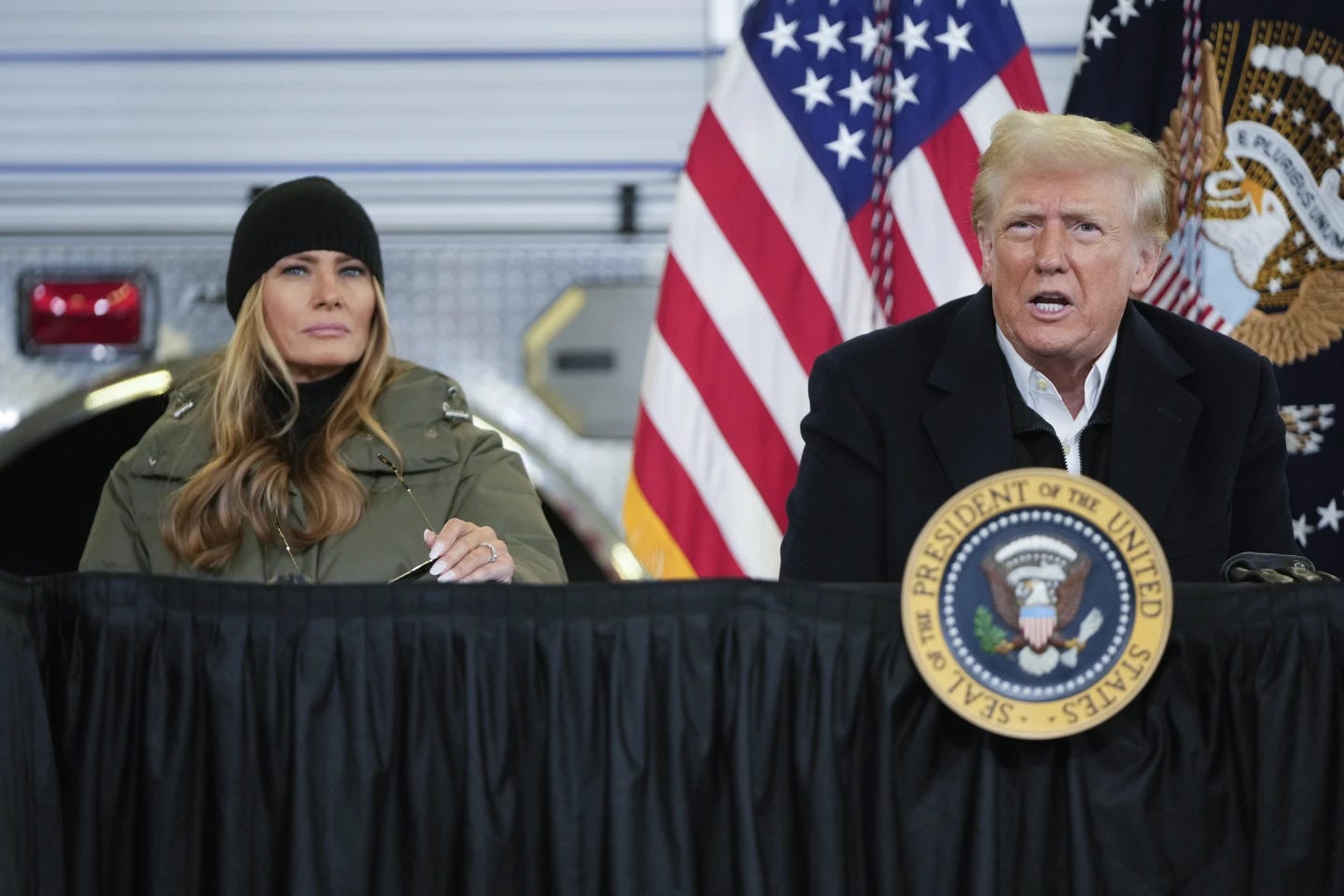Economic Forces That Will Shape Trump’s First Year in Office
WASHINGTON (AP) — As President Donald Trump steps into his new term, he faces an economy that doesn’t always align with political promises. While he has vowed to spur strong economic growth through tax cuts, tariffs, and booming oilfields, Trump’s first year in office will be shaped by several critical economic forces that could challenge his administration’s goals.
Despite a solid job market and a low 4.1% unemployment rate, Trump must navigate issues such as inflation, a growing budget deficit, trade tensions, immigration policies, and widening wealth disparities. These challenges are not only likely to influence his economic agenda but also play a significant role in how voters perceive his leadership.
Trump has already signaled his intent to blame the challenges on the policies of his predecessor, President Joe Biden, just as Biden has done in the past. “This begins with confronting the economic chaos caused by the failed policies of the last administration,” Trump told the World Economic Forum on Thursday.
Here are five key economic forces that will likely impact Trump’s first year in office:
1. Inflation and Consumer Prices
Inflation remains a major concern for voters, with rising costs for everyday goods like groceries, gasoline, and housing. In an extensive survey of the electorate, 40% of voters cited inflation as the primary factor influencing their choice for president. Trump’s focus on combating inflation is central to his promise of economic growth. However, recent consumer price index reports show inflation rising at a 2.9% annual rate in December, up from 2.4% in September. Economists warn that inflation may worsen if Trump imposes tariffs and implements tax cuts funded by the deficit.
Housing remains a significant concern for consumers, with rising mortgage rates and home prices due to a shortage of available properties. Shelter costs, which make up 37% of the consumer price index, have been increasing at an annual rate of 4.6%, higher than pre-pandemic averages.
2. Tariffs and Trade Policy
Trump has promised to implement 25% tariffs on imports from Mexico and Canada starting February 1, and has proposed additional tariffs on Chinese goods. He argues that these tariffs will combat illegal immigration and stop the flow of drugs like fentanyl. While tariffs can be a diplomatic tool and revenue source, they also pose a risk of higher costs for consumers and could slow down trade talks.
During his previous term, Trump’s tariffs led to increased revenue for the U.S., but the costs to families and businesses were significant. The effectiveness of these tariffs will depend on whether Trump follows through with his threats and how trade partners respond.
3. National Debt and Fiscal Policy
Trump has criticized the national debt, blaming Biden’s policies for inflating the economy. However, 22% of the current $36 trillion debt originated from Trump’s own first term. Experts warn that the U.S. is approaching fiscal limits, and the growing national debt could constrain Trump’s economic plans. Paul Winfree, a former Trump adviser, suggests that if Trump can maintain 3% economic growth, he may be able to extend the 2017 tax cuts while keeping debt under control. However, rising interest rates on U.S. debt could lead to higher borrowing costs for consumers and the government.
4. Immigration and Labor Market
Trump’s tough stance on immigration may limit economic growth by restricting the flow of workers needed to fill jobs. Immigrants have become a vital part of the U.S. labor market, with 84% of last year’s net population growth coming from immigrants. A reduction in immigration could slow job gains, particularly in industries like construction, agriculture, and hospitality.
Satyam Panday, chief U.S. economist at S&P Global Ratings, predicts that if Trump limits immigration to pre-2017 levels, U.S. economic growth could slow from 2.7% to 2%. Monitoring immigration flows and job reports will be key to understanding how this policy affects the economy.
5. The Growing Wealth Gap
Trump’s policies will also need to address the widening wealth gap between the nation’s billionaires and working-class voters. Figures such as Elon Musk, Jeff Bezos, and Mark Zuckerberg have seen their net worths soar under Trump’s economic policies. In contrast, the median U.S. household wealth increased by just $9,600 in 2021-2022, reaching $176,500.
Scott Ellis, a member of Patriotic Millionaires, suggests that Trump’s first year should be scrutinized for how the wealth of the ultra-rich continues to grow, as it may indicate whether his economic policies favor the wealthy over middle-class families.
As President Trump embarks on his second term, these economic forces will play a crucial role in shaping his presidency and the national debate over the future of the U.S. economy.


